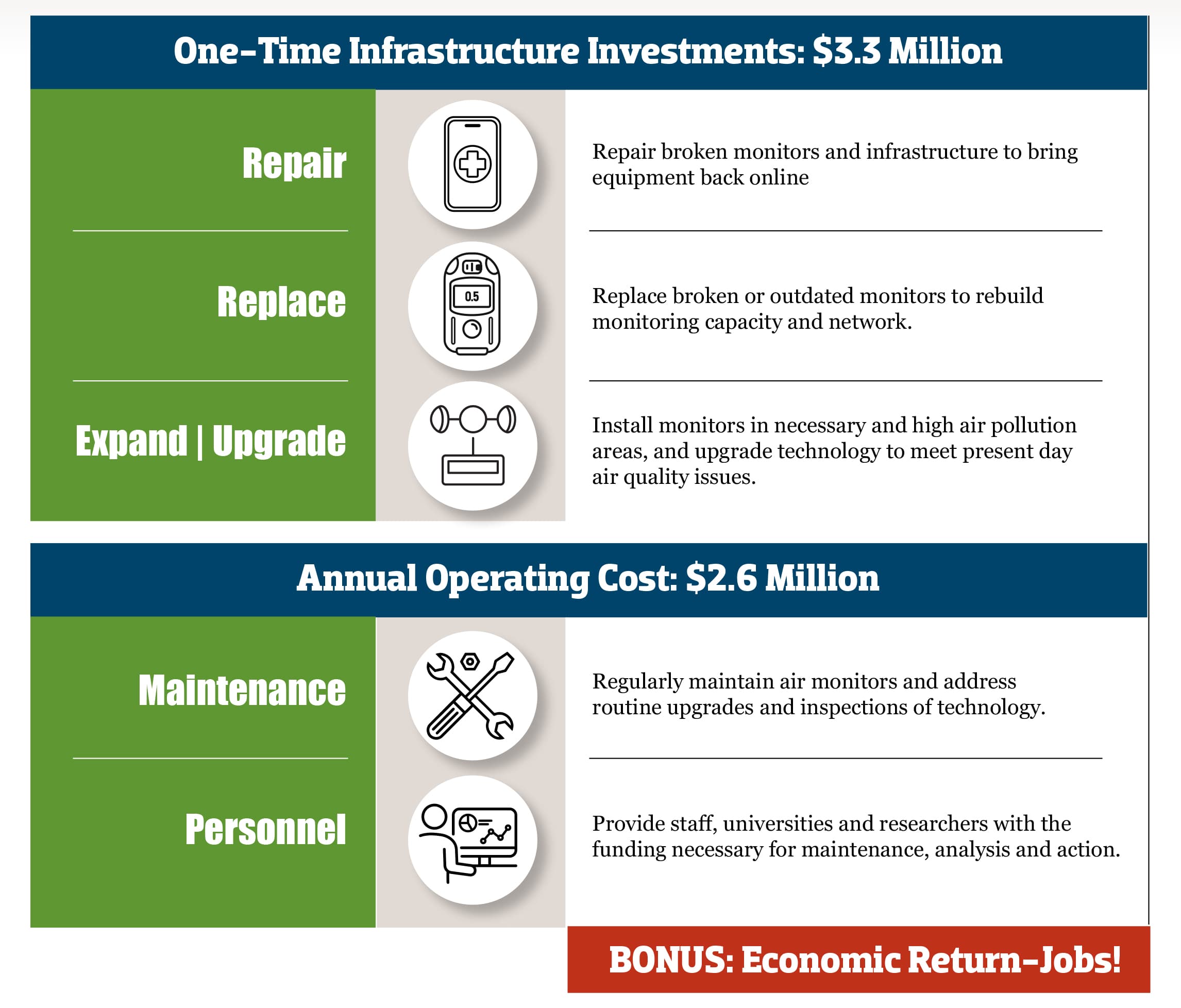Monitoring data is essential to better understand and improve air quality in parks while spotting nationwide trends affecting public health and ecosystems.

The Case for Fixing and Building Out National Parks Air Monitoring Networks
Our national parks are places of unparalleled natural wonder, historical significance, and cultural value, yet most are plagued by poor air quality that can threaten human health and detrimentally impact…
See more ›Our national parks are places of unparalleled natural wonder, historical significance and cultural value. Yet many are plagued by poor air quality that threatens human health, degrades scenic views and harms wildlife and ecosystems. Understanding the state of air quality through consistent data analysis and updated monitoring equipment is essential. Unfortunately, the National Park Service does not receive sufficient funding to keep air monitors fully operational around the nation.
Sadly, due to consistent lack of funds, air quality monitors in and around parks are deteriorating over time with no planned repairs – in fact, some may even be removed. Indeed, many air monitors are old, in need of repair, or missing entirely from some parks. According to NPCA’s 2021 report, 69 national parks have monitors inside their boundaries, 230 national parks have access to air monitors outside their boundaries, and 124 national parks have no air monitors within or outside of park boundaries.
Most air pollution affecting our 428 national parks originates beyond their borders, sometimes traveling hundreds of miles, with the greatest impact to air quality coming from a variety of sources like vehicles, oil and gas operations, power plants and other industrial facilities. At times, air pollution in some national parks is so unhealthy that the NPS has to issue safety alerts to protect visitors and people who may have health concerns, like asthma, chronic obstructive pulmonary disease or other chronic lung ailments. NPS uses measurements of ground-level ozone to determine when air in parks becomes unhealthy. Two parks in particular, Sequoia and Kings Canyon National Parks, recorded 80 days with unhealthy air in a single year (2022).
To protect people and parks, NPCA educates decision makers and Congress, urging the allocation of funds for the National Park Service to maintain existing equipment and, when necessary, repair and replace them. Specifically, NPCA urges Congress to allocate a one-time infrastructure investment of $3.3 million and $2.6 million annually for national park air monitoring networks to ensure that robust science guides the enduring protection of our cultural and natural resources for their own sake and that of people’s health.
Request for Air Monitor Funding
Get Action Alerts
Want national parks in your inbox? Sign up for NPCA email updates to receive news, features, and opportunities to make a difference! You can unsubscribe at any time.
